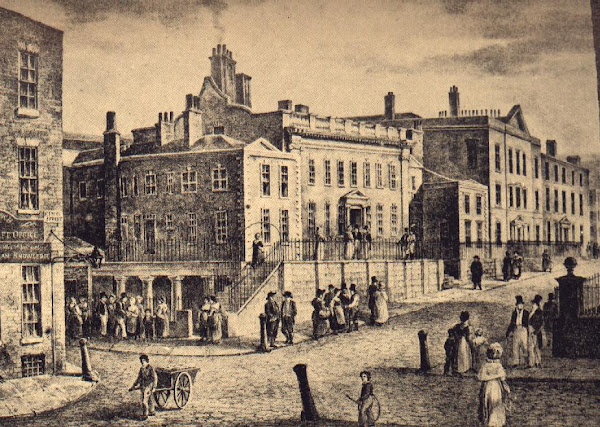The most enduring feature of Rookwood is undoubtedly the account of Dick Turpin’s ride to York, which comprises the whole of Book 4 of the 5-book novel. While Turpin (1705-39) was a real character whose life is quite well documented, his ride to York, to provide an alibi is fictitious, and probably based on an incident in 1676, when a highwayman known as ‘Nicks’ (William Nevinson, see James Sharpe, Dick Turpin: The Myth of the English Highwayman, pp.74-5) is said to have made such a ride for the same reason. Turpin’s famous mare Black Bess was certainly a product of Ainsworth’s imagination, and the story of the ride was the result of an extraordinary burst of creative energy.
The author later described the process as follows:
'The Ride to York was completed in one day and one night. This feat – for feat it was, being the composition of a hundred ordinary novel pages in less than twenty-four hours … from the moment I got Turpin on the high road till I landed him at York, I wrote on and on without the slightest sense of effort. I began in the morning, wrote all day, and, as the night wore on, my subject had completely mastered me, and I had no power to leave Turpin on the high road. Well do I remember the fever into which I was thrown during the time of the composition. My pen literally galloped over the pages. So thoroughly did I identify myself with the flying highwayman, that, once started, I found it impossible to halt.'
Ainsworth had found his literary niche, and from that point until the end of his life, a ceaseless flow of novels poured from his pen. He put aside the business of publishing and when Rookwood appeared in 1834, the three volumes were produced by the firm of Richard Bentley. The reading public immediately took the story to its collective heart, and the book was a runaway success in both critical and popular terms. Ainsworth became the toast of literary London, lionised at gatherings attended by aristocratic patrons of the arts and what would nowadays be called the ‘glitterati’. Various evocations of Dick Turpin strode across the London stage in dramatisations of Rookwood, and Ainsworth’s portrait actually appeared on the new omnibuses to publicise the novel; one of the first examples of this kind of advertising.
Sunday, 20 April 2008
Literature and Love

In London, Ainsowrth met a man who was to have a profound influence on both the personal and professional aspects of Ainsworth’s life. John Ebers was a publisher, and proprietor of the Opera House in Haymarket, where the two met and struck up a friendship. Ebers first invited the literary tyro to help write and edit a proposed literary miscellany, which, despite initial enthusiasm, ultimately failed to appear. There were a few trifles of verse and prose, as well as a curious (and now extremely rare) pamphlet entitled Considerations on the best means of affording Immediate Relief to the Operating Classes in the Manufacturing Districts.
More of that later, but the most important factor in the friendship with Ebers, which changed Ainsworth’s life, appeared in the shape of the younger of the publisher’s two pretty daughters (see illustration), with whom the young man immediately fell in love. Fortunately, Fanny Ebers concurred with these sentiments, and the two were married in 1826. They were to have three daughters, Fanny (b.1827), Emily (b.1829) and Blanche (b.1830). However, Ainsworth’s literary social life continued unabated, and in 1835, Fanny returned to live with her father. She died three years later, at the tragically early age of 30.
Subscribe to:
Comments (Atom)
